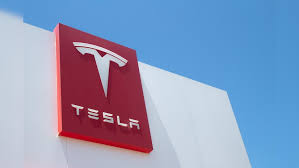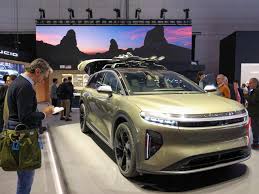Tesla’s Global Slump: Can Emerging Markets Like India Bring a Revival?
Tesla, the electric vehicle (EV) leader, is currently facing a significant slowdown in global sales. After years of rapid growth, recent reports show that Tesla’s sales have dived, with a 10% drop in deliveries in the first quarter of 2025 compared to the previous year. This decline has raised concerns about the company’s prospects as it battles increased competition, economic factors, and a shifting consumer landscape. So, what’s next for Tesla? Could emerging markets, particularly India, help reverse the trend?
Tesla’s Struggles in Key Markets
The slowdown in Tesla’s global sales comes amid falling demand in key markets, including North America and Europe. Several factors are contributing to this drop, such as increasing competition from traditional automakers shifting to electric vehicles, and the rise of new EV startups. In addition, Tesla’s premium pricing strategy is becoming less attractive to consumers, especially in times of economic uncertainty and rising interest rates, which make high-ticket items less affordable.
In the face of this downturn, analysts are questioning how Tesla can maintain its market leadership. While it has been able to weather past challenges, these latest struggles come as the company’s competition grows fiercer. Despite its innovative tech and strong brand image, Tesla is finding it harder to sustain the rapid growth it once enjoyed.
India’s Potential: A Key Growth Market for Tesla
One of the most promising solutions to Tesla’s current troubles could lie in emerging markets, particularly India. With its rapidly expanding middle class and the world’s third-largest automotive market, India is quickly becoming a hotspot for automotive companies. For Tesla, this presents an exciting opportunity to tap into a new and growing market.
India’s government is pushing for increased adoption of electric vehicles, offering a range of incentives to both consumers and manufacturers. This could help make Tesla’s vehicles more affordable and appealing to Indian consumers. Additionally, Tesla’s plans to establish a manufacturing base in India could further reduce costs and increase its appeal in the country.
However, Tesla faces challenges in India, where consumers tend to be more price-sensitive compared to Western markets. To succeed, Tesla would need to offer more affordable models tailored to Indian preferences. The company would also need to address infrastructure challenges, including the lack of EV charging stations, which could hinder widespread adoption.
Tesla’s Strategy: Lower Prices and Boosting Production
To address its struggles in mature markets, Tesla has recently focused on lowering the prices of its vehicles, hoping to make its cars more accessible to a wider range of consumers. Tesla has already cut prices across key regions like the U.S. and China in an attempt to maintain its competitive edge. The company is also ramping up production in emerging markets, like India and China, in a bid to reduce costs and boost production scale.
With India’s potential for growth, Tesla is making a calculated bet on the country’s growing demand for electric vehicles. If the company can overcome the unique challenges of the Indian market, it could establish a significant foothold in the region. Tesla’s strategy includes introducing lower-cost models and expanding local production, which could drive down prices and increase sales volume.
The Road Ahead: Will India Be Tesla’s Savior?
Despite the difficulties Tesla faces in its key markets, emerging markets like India could play a pivotal role in its recovery. While Tesla has faced challenges in mature markets, India presents a new frontier with immense potential. The country’s young, tech-savvy population, growing interest in EVs, and supportive government policies could help Tesla navigate its current slump.
However, Tesla’s success in India will depend on its ability to adapt to local needs. The company will need to offer more affordable models, work with the government to improve charging infrastructure and establish a robust production base. If Tesla can crack the Indian market, it could be the catalyst the company needs to regain its momentum in the global EV race.
Conclusion
Tesla’s global sales slump is a wake-up call, but India’s emerging market offers a promising solution. If Tesla can overcome the challenges of pricing, infrastructure, and competition, it may find itself in a strong position to dominate the Indian EV market and reclaim its growth trajectory. The next few years will be crucial in determining whether Tesla can successfully transition from its core markets to an increasingly important market like India.







